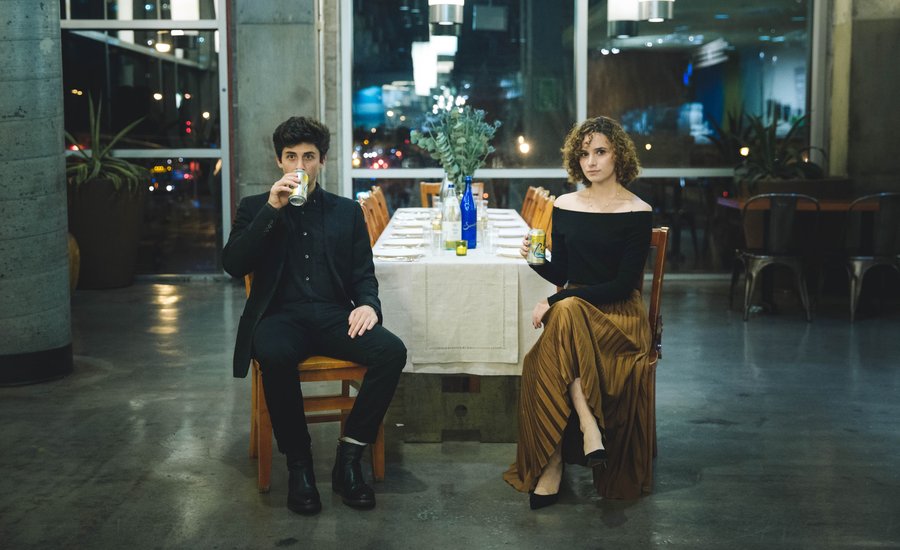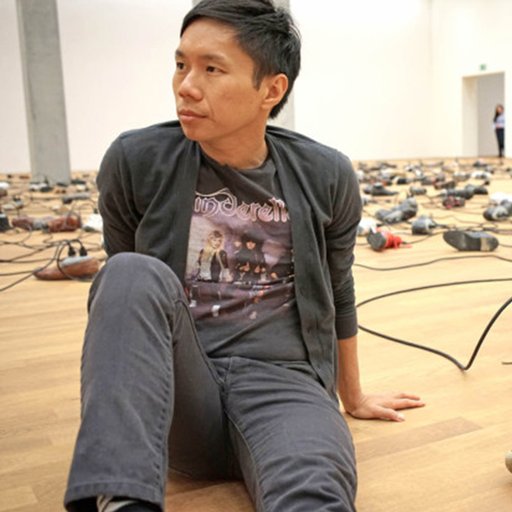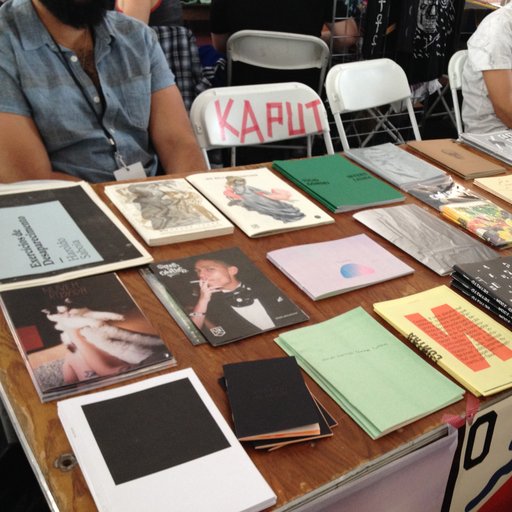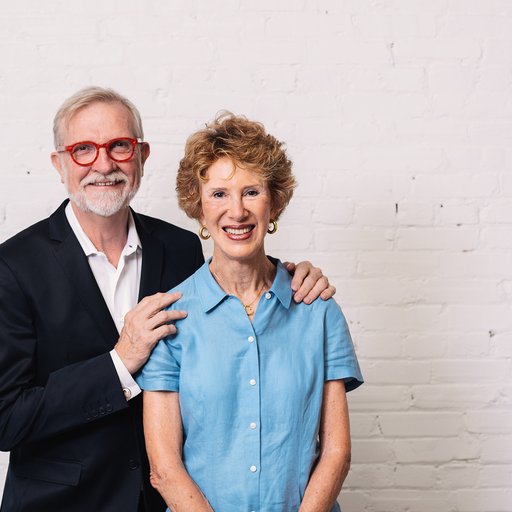You may have already seen Matt Starr's work floating around the internet. Ever like a post of a beige-uniformed guy with twelve large Amazon boxes stacked on his back as Amazon.com's experimental delivery service, #amazonboy? Or maybe you've seen his "I'm Sorry" ads on Brooklyn bus stations, a collaboration with artist Pete Voekler, signed "Men" or "The Media" or "America." Maybe you ran into him that time he organized a group to occupy the MoMa bathrooms for #nosafespace to hand out seminal works of art by Jeff Koons and Marina Abromavič repurposed within violent images of our ongoing war in The Middle East. Or maybe it was that A$AP Ferg music video he directed on an iPhone. Do you follow Walm.art on Instagram? Whether you've seen his work as an uncreditted retweet or IRL, Matt Starr's brand of provocateur is part Maurizio Cattelan blow-it-all-up satire, part Brad Troemel 's internet and brand savvy.
My first brush with Starr's work was when friends started sending me his faux millenial viral fashion trend called "babycore." It was a not-so-subtle way of telling me that I dress like a toddler. While my "bright, carefree sense of style and attitude" (TM Babycore) hasn't matured much, Starr has grown his practice since teaming up with fellow artist and theater facilitator Ellie Sachs to begin a whole new chapter for both of them. Together, they have occupied Whole Foods to host black-tie, candle-lit potluck dinners, where participants discuss themed topics such as the 2017 election, nuclear war and then some, and are currently wrapping up production on a remake of Annie Hall , whose entire cast is comprised of the senior citizens over at Lennox Hill Neighborhood House on Manhattan's Upper East Side. In Matt's own words, "I think the art world would codify this as 'relational aesthetics.'" Here, the duo speaks with Artspace's Shannon Lee about being outsiders of the art world, the importance of bringing art to fringe communities, and on creating works that can reach anyone and everyone.
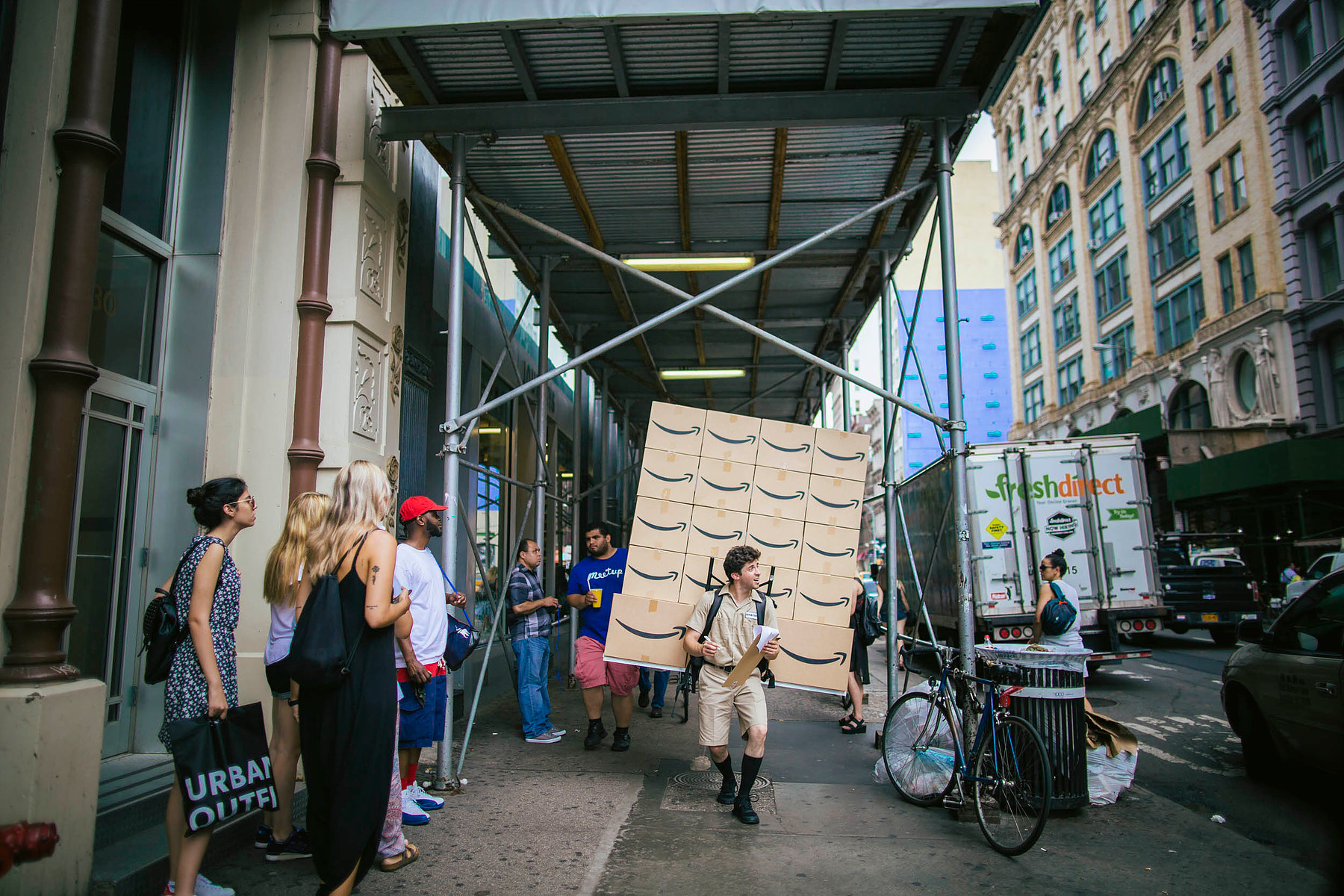 Matt Starr as #amazonboy. Photo courtesy of artist.
Matt Starr as #amazonboy. Photo courtesy of artist.
How did the two of you start your practices?
Matt Starr: I moved to Israel after high school and joined the Israeli Army (aka: the Israeli Defense Force). I only lasted through basic training. I realized it wasn't for me when I was enjoying stealing chocolate cakes from the kitchen and bartering them in the tents for various nut butters more than I enjoyed sleeping and showering with my M-16. I left after that. I stayed in Israel for another year and then moved to Indiana for school. I initially created my own major, "Socially Charged Media," with a minor in Swahili. It wasn't until I took a course called "New York's Downtown Avant Garde and the French New Wave" that I realized art was much more than the little I'd been exposed to as a kid. I really didn't go to museums or take any art courses before that. I was totally blown. I then got a BFA in New Media and a minor in Art History and moved to New York. I didn't know how to break into the art scene so I started making things and putting on my own shows. I'd add a lot of strangers on Facebook and invite them (when inviting people to things on Facebook was still a thing and not so annoying). I slowly started to build a community and would then put on larger shows.
Ellie Sachs: My background is in theater, and I've been very involved with the downtown New York theater scene, directing and producing. But beyond the professional scope of my theater experience, I started doing art in prisons—there are six or seven I've worked with throughout the country, ranging from maximum- to medium- to low-security prisons.
What started that?
ES: I went to the University of Michigan's theater school, which is very performance heavy. Students have a very focused, eye-on-the-prize mentality—it's Broadway or bust. I felt that there was a moving away from real storytelling and had stumbled, by chance, into this class my junior year that sent students into prisons to do art. It was in this men's medium-security prison in Jackson, Michigan where I finally felt like I was doing theater again.
MS: Have you told her about Sing Sing? This is crazy...
ES: So, Matt talks a lot about being political... I think the way I do it is a little different.
MS: She works within the system, and I work outside it.
ES: That's pretty accurate. I'm definitely a bleeding heart and if I focus on everything that's happening in the world, it really gets to me. Being able to connect with the prison population and seeing how rife the system is with injustice and how much the people within it need an outlet made this issue a no-brainer for me. I work with a wonderful New York organization called Rehabilitation Through the Arts and this past Spring, they asked me to be the lead in a production of "On the Waterfront" at Sing Sing maximum security prison where I would be acting opposite someone who is serving 20 to life.
 Cast and crew photo from "On the Waterfront" at Sing Sing Correctional Facility. Photo courtesy of artist.
Cast and crew photo from "On the Waterfront" at Sing Sing Correctional Facility. Photo courtesy of artist.
Do you think those kinds of programs are available and accessible in most prisons?
ES: They are definitely happening more and more. California recently passed a massive budget to pump the prisons with this work. The organization that I work with did two huge studies where they interviewed and followed participants who had taken at least one workshop through their program, and the recidivism rate is remarkable—over 95% of people who go through our program never re-enter the prison system. So if that's not an endorsement for art in prison, I don't know what is.
I love that you're bringing storytelling and creative tools to these communities that otherwise lack access or outlet for it.
MS: That's really what attracted me to working with Ellie in the first place. For me, I've always felt like an outsider. Even when I finally did start taking art classes and learning about art and consciously calling myself an "artist," I knew that I didn't want to be making art for artists or the art institution. I approach every project with the attitude that this is for everybody. How do I make art that appeals to everybody? Or at least provoke everybody. When I met Ellie and she told me she makes art with and for these fringe communities, it was extremely attractive.
ES: I had a similar feeling of being an outsider. I got offered to take this big job working on a play at Lincoln Center and there was a lot of pressure to work within the confines of the professional theater world that to me, kept looking less and less sparkly as I got closer to it. It didn't have that democratic, storytelling appeal that I wanted it to have. So we are both kind of functioning within this outsider context.
More than outsider, I think that your works and experiences (both collectively and individually) speak to a larger need for democracy within creative institutions. I think it's a common sentiment that artists have—institutions can strip away the purity of creativity.
MS: You lose the purity of interaction. When you can interact with people who don't receive a certain (and I hate to say this) "caliber" of art, I think they appreciate it more than the person who goes to galleries and museums every single week. When you can bring art to these communities, it's just a really beautiful gesture.
ES: People are often connecting without pretense. There's not a performative, "Oh, this part is really speaking to me because of x, y, z reference." It's more, "This makes me feel a certain way," or "This reminds me of a time when..." It's not as esoteric.
How did the Whole Foods project start?
MS: I've always been into contrast—taking one situation and sticking it in an environment where it just doesn't make sense. A while back, I held an open studio in The Strand Bookstore's children's section where people could come and talk to me about my art on those little chairs. Then when I met Ellie, we were brainstorming different projects and we really wanted to host a dinner party... I'm also obsessed with Whole Foods. Like, the idea that, "I just want to make enough money so I can live in a decent apartment and shop at Whole Foods comfortably." We came up with the concept of hosting a fancy dinner. We live in New York where there's so much going on but how do you differentiate? You go to so many events all the time, so how do you truly create a memorable experience? By making people feel a little out of place, a little uncomfortable, and do something that no one else is offering —fancy, candle-lit, violin accompanied, black-tie dinners at Whole Foods! It kind of started out as a joke. I had the idea of hosting a last supper the night before Trump got elected into office. Now, each dinner is a different theme, but the first was "A Last Supper".
ES: After that, we had "A Cold Supper," when all of the nuclear threats were between the U.S. and North Korea were coming to a head. An important aspect of these happenings is that everybody is split into teams and all the teams have to create a dish that speaks to the evening's theme and they can only shop for food within the store. It ends up becoming this amazing melting pot—we always invite people from different disciplines and backgrounds and at the end of the night everyone is exchanging numbers! It's amazing thing to see strangers working toward a common (albeit, somewhat strange) goal.
MS:
It's kind of socialist... I think the art world would codify this as "
relational aesthetics
."
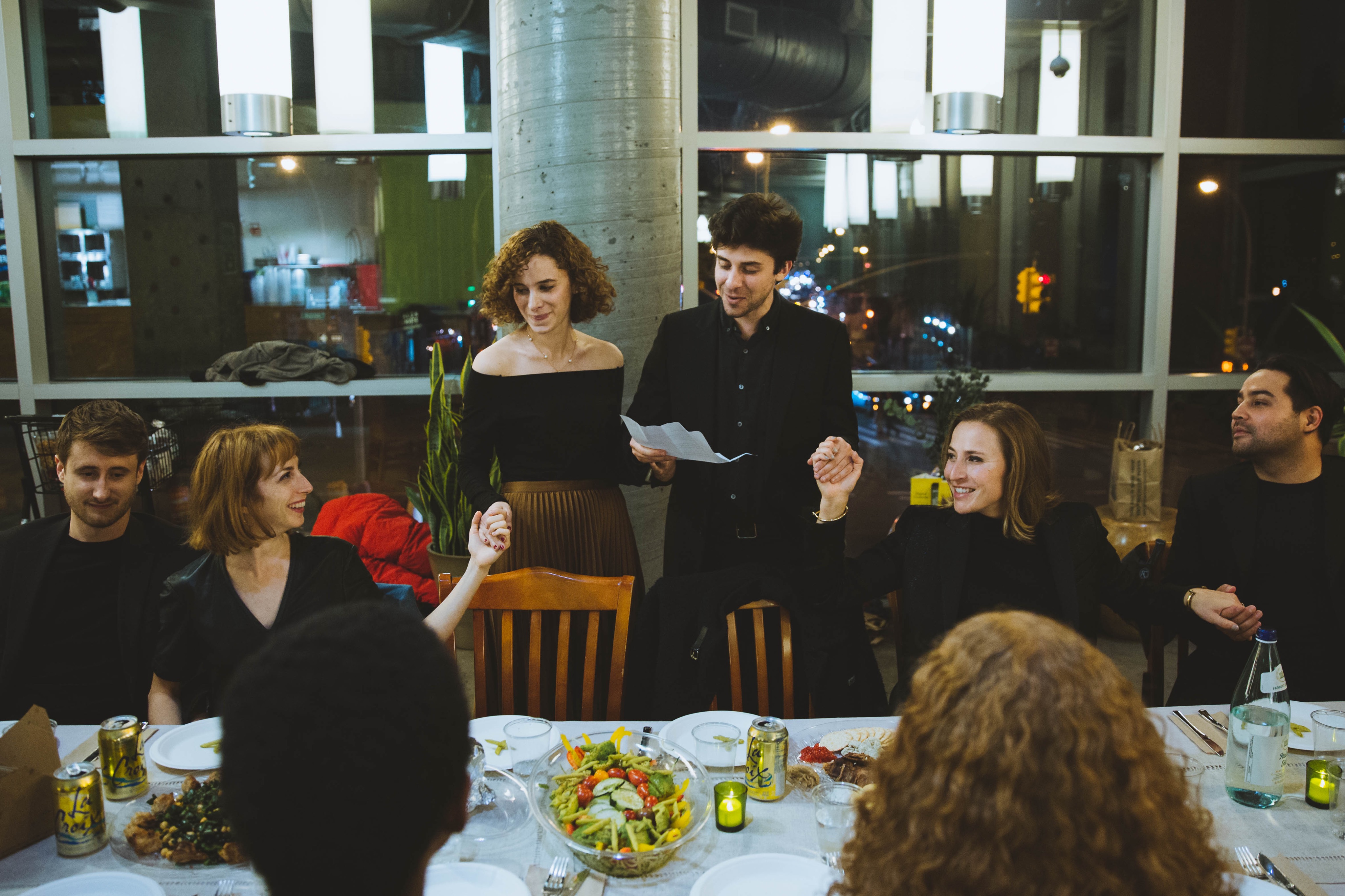
Honestly, anything that involves food is automatically termed "relational aesthetics."
MS: Right! I mean, it is exactly what we're doing so if this were to exist inside of a gallery, that's what it would be. But there's nothing really special about that anymore—it's been done! What's exciting about this is that we do this without Whole Foods permission. They have no idea it's happening! The security guards know, but they love it.
Wait, so it's hosted in their public dining area?
ES: Yeah, that upstairs space.
So you basically occupy Whole Foods?
MS: Yeah! And we're looking to branch out to other spaces but right now, it's exactly everything that I've wanted from my art. We bring together a really incredible group of people to recontextualize that space.
ES: I've personally been obsessed with the decline of public spaces and institutions. One of my favorite books is called Bowling Alone . It's about how people used to bowl on teams in the '50s and '60s but now people do it by themselves and how it reflects this decline in civic, public life and public spaces. I've always thought Whole Foods is kind of an epicenter for a lot of New Yorkers in lower Manhattan.
MS: Well, for a certain demographic. What's nice about these dinners is that since everybody chips in, the average cost per person is about six to ten dollars. So in a way, we're trying to democratize Whole Foods so that anyone can afford it.
ES: It's true. Still, as a public space, the upstairs of Whole Foods is open to anyone, for free. You'll see people up there playing cards, or Dungeons and Dragons.
It's a public private space.
ES: Exactly! It's still corporate!
MS: I remember this one guy who would set up his desktop computer at Whole Foods every single day.
Do you think that might've been a performance piece?
MS: To me, it was! It reminded me of when I first moved to New York and my boss gave me a MoMa membership. I couldn't afford an art studio at the time, and when you have that membership, you have an hour before the museum opens to go see the exhibitions. Nobody would go except for the old ladies, so I would always go in, set up my computer, and use it as my art studio. It was perfect! It's quiet, and also, have to tell you, MoMa has incredible WiFi.
ES: Also, another great public private space is that funny charging lounge couch in the lobby. I always see people charging their phones with their shoes off down there!
MS: These institutions open themselves up in one way and say, "Here, this is how you can use us." But they don't tell us how we can't use them. I like figuring out the ways we can't use them, and then do that.
 From Matt Starr's "I'm Sorry" series in collaboration with Pete Voekler. Photo courtesy of artist.
From Matt Starr's "I'm Sorry" series in collaboration with Pete Voekler. Photo courtesy of artist.
What kind of work do you think you guys would be making if there wasn't a system to critique?
MS: I think the Whole Foods dinners would still be happening. They don't have to be political because at the end of the day, they're really just Shabbat dinners.
ES: For me, I've always made art to tell stories. Right now, the stories we're telling and gravitating toward are political in nature, and a little bit more charged just because of what's happening.
MS: I've only really been political for a year and a half. Before that, I was really just being reactionary. It was about entertainment and provocation. I've only been making art for five years now and I was attracted to art as a provocateur. Artists like Karen Finley, Richard Hell , John Waters , Harmony Korine , Chris Burden , Andy Kauffman, David Byrne ... all of these artists that we're most attracted to ultimately represent freedom. They're not always acting politically.
Freedom is inevitably political, I think. As soon as particular freedoms come under threat and are oppressed, politics becomes activated. Have you guys seen the new Ai WeiWei ?
MS: We've been dying to. I think he's the best artist in the world right now and the best artist for the people who don't even know they're looking at art. He is reaching more people on a human level and on an entertainment level than any other artist is. He's incredible. His art is actually changing the world, and what more can an artist ask for?

The documentary he directed,
Human Flow
, is right up there with
An Inconvenient Truth
—they're going to haunt us for generations. Speaking of important films (though on a much lighter, life-actually-rules note), you guys remade
Annie Hall
! With an all senior-citizen cast! How did this project start?
MS:
I went to visit my grandma, Maxine, a few years ago. It had been a while since I'd last seen her and at the time of my visit, she was showing signs of Alzheimer's—she kept asking the same question over and over again. I wanted to come up with a way to connect and communicate with her, so I decided to play some music and movies from when she was young. When I put on
Casablanca
, something changed. She started reciting lines and assuming the role of Ingrid Berman's character Ilsa. I would play the Humphrey Bogart character opposite her. I used this as a means of communication with her. When I came back to New York and met Ellie, I told her Maxine's story and that I wanted to do it on a larger scale with a senior center but had no idea how. Ellie did. What has the filming process been like?
ES: I always have a hard time phrasing it—I love bringing art to fringe communities, but I hate the institutionalized behavioral guidelines for how you're supposed to administer art in "alternative spaces." I think there's too much pedagogy when it comes to how you should carry yourself as a facilitator and how you should behave and what your curriculum should look like. I've always found that to be inherently strange given that art is supposed to be freeing.
Do you have an example of one of the weirdest guidelines you've had to follow?
ES: The ones in prison make sense—things you aren't supposed to talk about, what I'm supposed to wear. Things like that make sense, but I've worked in a lot of schools and low income housing community centers and people have a lot to say about the curriculum which is strange. There's a sterility associated with bringing art to unconventional spaces. It's very bureaucratic. What was wonderful about this project was coming into it with Matt who had never worked within an institution before so he really brought a whole new attitude—he brought the spice! All of our students were such hams!
MS: We had pitched this class and its subsequent film (it was a sort of package deal where we would teach this class and it would turn into a production) to 15 different senior centers and only one wanted to do it—Lennox Hill Neighborhood House. It was a challenge just because a lot of people thought the seniors were too infirm and wouldn't be able to handle it.

Still from "My Annie Hall." Photo by Zach Roif.
How did you decide on Annie Hall as your production?
MS: We offered them a list of ten films but we were leaning towards Annie Hall because it's about the Upper East Side, and relationships. We actually ended up filming at a lot of the original locations. Our seniors really suited the characters in the film.
ES:
Annie Hall
is also a movie about memory and a lot of the people in our class are in the final quarter of their lives. It's looking back, surmising what their lives have been.
MS:
It's definitely a reinterpretation. It very much showcases the sensibilities of us as directors, but more than that, it shows the sensibilities and personalities of our students.
ES:
You may not have ever met Harry and Shula (who play the main characters) but once you have seen them on screen, you will know them.











